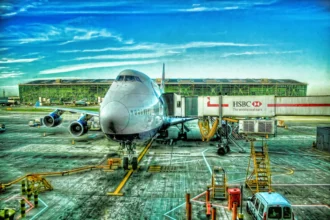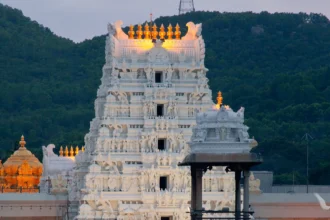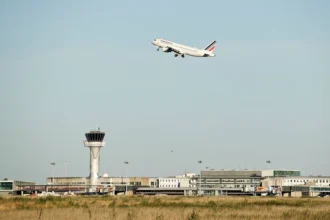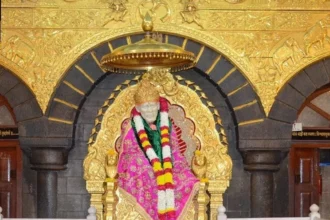India’s aviation landscape is on the brink of a major transformation. The highly anticipated Navi Mumbai International Airport (NMIA) is nearing completion and is expected to begin operations by the end of September 2025. With 94% of construction already completed, NMIA is set to ease the burden on Mumbai’s existing airport while ushering in a new era of air travel, connectivity, and economic growth.
Announced recently by Maharashtra’s Deputy Chief Minister Devendra Fadnavis, NMIA is a greenfield airport project that has been in the making for over a decade. Its launch is being hailed as a landmark achievement for Indian infrastructure development—designed not just to serve travelers, but to transform the economic landscape of the Mumbai metropolitan region and beyond.
Why Navi Mumbai Needed a New Airport
Mumbai’s current international airport, CSMIA, is one of the busiest in India and has long operated under immense pressure. Originally built to handle far fewer passengers, it now juggles more than 50 million passengers a year, leading to chronic congestion, delays, and overburdened ground services.
NMIA is being developed to absorb this growing demand, with a scalable design that starts with a 20-million-passenger annual capacity in Phase I and can expand up to a whopping 90 million passengers per year—putting it in league with some of the world’s largest airports, such as London Heathrow and Singapore Changi.
IndiGo Takes the Lead: Domestic First, International Next
India’s leading airline, IndiGo, has been confirmed as the first carrier to operate from NMIA. The airline will initially launch with 18 daily domestic departures, connecting Navi Mumbai to major Indian cities such as Delhi, Bengaluru, Hyderabad, Kolkata, and Chennai.
By the time the 2025–26 winter schedule kicks in, IndiGo plans to scale up to 100+ daily flights. International routes are also on the horizon, with operations expected to begin by 2026, signaling NMIA’s ambition to become a global gateway.
“We’re excited to be the launch partner for NMIA. This airport is going to change the way travelers experience Mumbai,” said a senior IndiGo spokesperson.
Inside the Airport: What Makes NMIA Stand Out
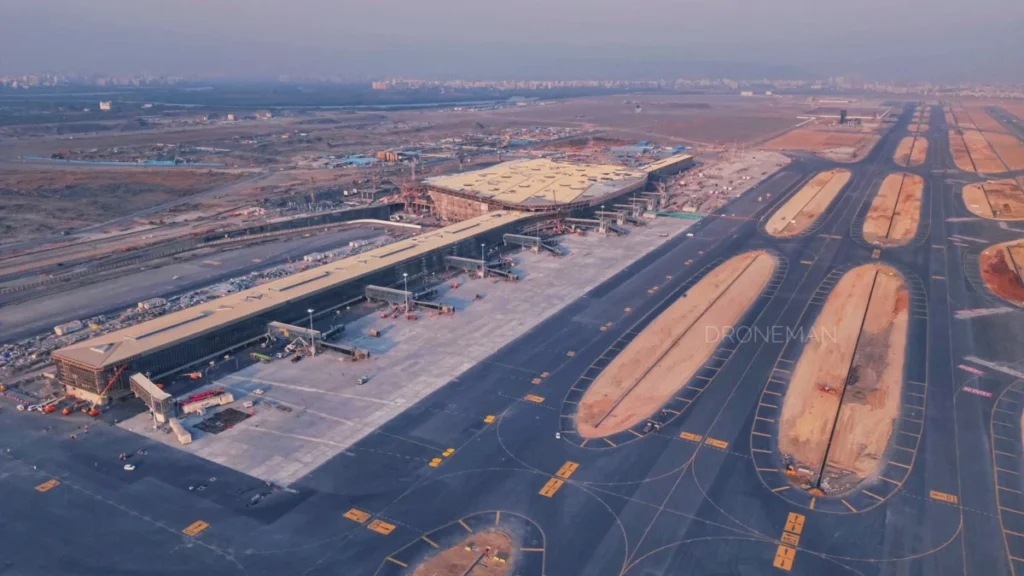
Beyond its massive scale, NMIA is poised to be a technological marvel. The airport is expected to house the world’s fastest baggage claim system, dramatically slashing wait times for arriving passengers—a common frustration at many Indian airports.
Other features include:
- AI-powered check-in and boarding systems for a seamless passenger flow
- Biometric-enabled e-gates for paperless entry and exit
- Smart parking and transport systems to reduce time spent outside terminals
- Green building certification, with solar-powered operations and rainwater harvesting
These enhancements are not just bells and whistles—they are strategically designed to ensure that efficiency, sustainability, and comfort are at the heart of every traveler’s journey.
13,000 Workers. One Vision.
Behind the construction of NMIA is an army of over 13,000 workers, working around the clock to meet the ambitious September 2025 deadline. This workforce includes engineers, project managers, architects, and skilled laborers from across the country.
The project is being developed by Adani Airport Holdings, which also manages other major Indian airports. Given its experience and access to capital, Adani’s role has been crucial in reviving the timeline and ensuring that NMIA remains on track despite past delays due to land acquisition and environmental clearances.
Unmatched Connectivity: How You’ll Reach NMIA
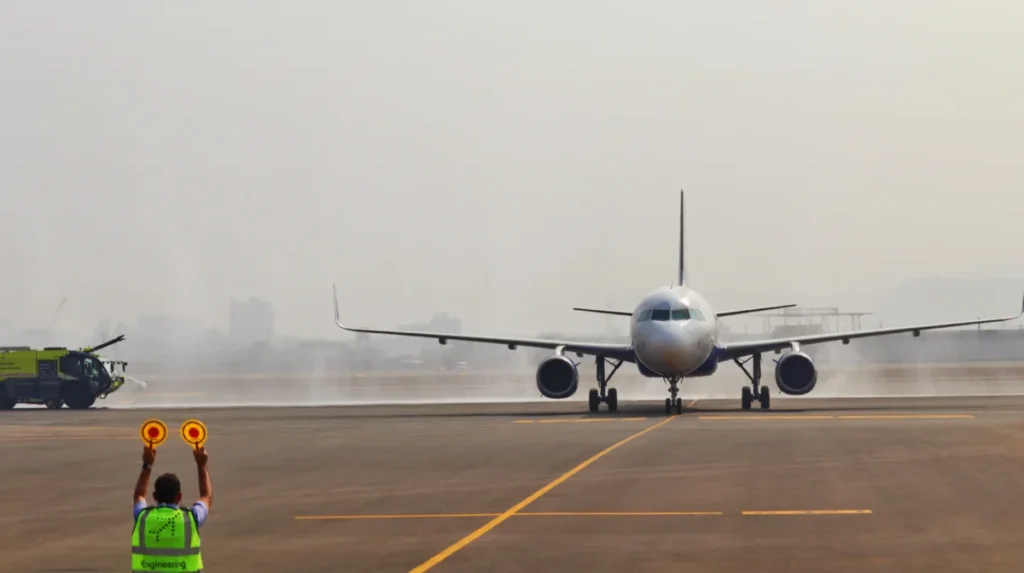
What makes NMIA even more compelling is its multimodal connectivity—a key factor in determining an airport’s success.
1. Metro Link to Mumbai
A dedicated high-speed metro corridor is being constructed to connect NMIA to Navi Mumbai, Mumbai suburbs, and CSMT (South Mumbai). Once operational, this will allow passengers to reach the airport from Mumbai city center in under one hour, bypassing road traffic.
2. Mumbai–Pune Expressway ‘Missing Link’
The newly constructed stretch of the Mumbai–Pune expressway includes India’s longest road tunnel and tallest cable-stayed bridge. This development will reduce travel time from Pune by nearly 45 minutes, making NMIA an accessible hub for travelers from the interiors of Maharashtra.
3. Rail & Water Transport
Plans are underway to create eco-friendly water taxi services and a dedicated railway station at the airport, further enhancing last-mile connectivity. These options aim to reduce carbon emissions and offer budget-friendly travel alternatives.
Symbolism and Strategy: Launch Aligned with PM Modi’s Birthday
The commercial inauguration of NMIA is expected to align with Prime Minister Narendra Modi’s birthday on September 17, lending the project political and symbolic significance.
Analysts see this as a powerful statement of the central government’s commitment to infrastructure-driven development. The airport is part of India’s larger ambition to modernize its transportation backbone, especially in high-growth corridors like Mumbai–Pune–Nashik.
An Economic Powerhouse in the Making
NMIA isn’t just another airport—it’s the foundation of a regional economic powerhouse.
Here’s how:
- Cargo Movement: The airport is set to become a major logistics hub, improving cargo efficiency and reducing turnaround time for exports and imports.
- Tourism Boost: With better international access, NMIA is expected to promote tourism in Maharashtra’s Konkan coast, Western Ghats, and even Goa.
- Job Creation: Experts estimate that NMIA and surrounding developments could generate over 200,000 jobs directly and indirectly in the next decade.
- Real Estate & Investment: Townships, hotels, business parks, and malls are springing up near the airport zone, with property prices already surging in the Panvel-Ulwe region.
Decongesting Mumbai’s Airspace: Safety & Efficiency
With the addition of NMIA, approximately 150 domestic flights are expected to shift from CSMIA, easing traffic and improving on-time performance. This will also decongest airspace over Western India, enhancing flight safety and enabling more direct routes, thereby saving fuel and reducing emissions.
Timeline Summary:
| Milestone | Progress/Date |
|---|---|
| Construction Status | 94% complete (as of July 2025) |
| First Commercial Flights | September 2025 |
| IndiGo Expansion Begins | November 2025 |
| International Operations | Early 2026 |
| Phase II Expansion | From March 2026 onward |
Final Thoughts: India’s Next Global Gateway
As India emerges as one of the world’s fastest-growing aviation markets, NMIA represents more than a new airport—it symbolizes the future of modern India. With state-of-the-art design, global-standard passenger experience, and visionary connectivity, NMIA is expected to redefine air travel for millions of passengers.
Whether you’re a frequent flyer, business traveler, or an aviation enthusiast, Navi Mumbai International Airport promises a world-class experience and a pivotal role in India’s infrastructure story.



